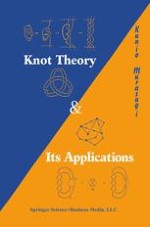1996 | OriginalPaper | Buchkapitel
Knots via Statistical Mechanics
verfasst von : Kunio Murasugi
Erschienen in: Knot Theory and Its Applications
Verlag: Birkhäuser Boston
Enthalten in: Professional Book Archive
Aktivieren Sie unsere intelligente Suche, um passende Fachinhalte oder Patente zu finden.
Wählen Sie Textabschnitte aus um mit Künstlicher Intelligenz passenden Patente zu finden. powered by
Markieren Sie Textabschnitte, um KI-gestützt weitere passende Inhalte zu finden. powered by
The motivation behind statistical mechanics is to try to understand, by using statistical methods, macroscopic properties — the easiest example being to determine what happens to water in a kettle when we boil it — by looking at the microscopic properties, i.e., how the various molecules interact. Statistical mechanics together with quantum mechanics have formed a basis for studying the physics of matter, i.e., the study from the atomic point of view of the various properties of matter. In general, the constituent molecules, even if we assume they obey the principles of dynamics, have extremely complicated means of motion. At present, mathematically these motions are virtually impossible to categorize. So, one reasonably successful method around this problem has been to form an ideal realization of matter. This realization takes the form of a statistical mechanical model that is a simplified copy of matter. The pivot that is essential for the model to at least have mathematical meaning is a function Z called the partition function, $${\text{z = }}\sum\limits_\sigma {\exp \left( {\frac{{ - {\text{E}}\left( \sigma \right)}} {{k{\text{T}}}}} \right)},$$ in which we define σ to be a state of the particular model, E(σ) to be the total energy of this state, T to be the absolute temperature, and k to be Boltzmann’s constant. The sum itself is taken over all the states of the particular model.
